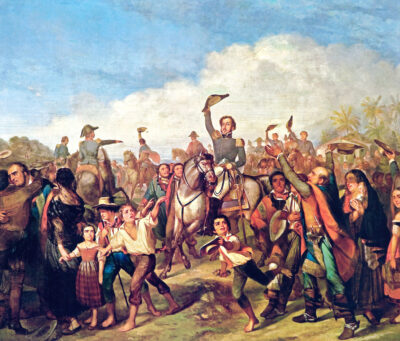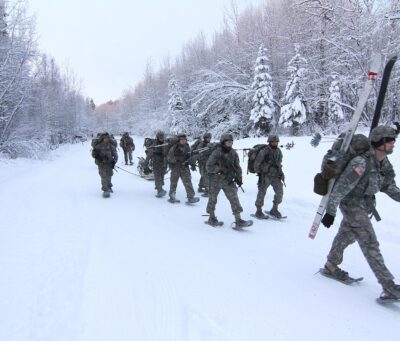Review of The Afghanistan Papers: A Secret History of the War by Craig Whitlock (New York, NY: Simon & Schuster, 2021)
One of the most vivid memories from my deployment to Afghanistan occurred on my first day. It was September 22, 2017, and I was with my infantry company in the base conference room listening to the welcome brief. Jet-lagged from the long trip from North Carolina via Ireland and Kuwait, I was having a hard time staying alert as various officers droned on about everything from the rules of engagement to the chow hall hours. Then the area commander, a colonel, entered the room to speak on the war’s progress. Standing in front of a map of Afghanistan, he confidently told us that the United States was closer to defeating the Taliban than ever before.
My ears perked up at the bravado. Surely, I thought, he was just trying to motivate us instead of giving an honest assessment of the war? After all, it was 2017 – 16 years after the initial invasion – and my battalion had just deployed with a mere two weeks of notice after President Trump increased the troop capacity by 3,000 servicemembers to 14,000. How could we be closer to defeating the Taliban in 2017 with just 14,000 troops, than in 2011 with 110,000 after a 30,000-troop surge? According to Craig Whitlock of The Washington Post, however, the colonel might have meant it seriously.
In his book The Afghanistan Papers: A Secret History of the War, Whitlock separates the war’s reality from its rhetoric using previously confidential documents of the U.S. government’s “Lessons Learned” program. [1] Executed by the Special Inspector General for Afghanistan Reconstruction, the Lessons Learned program privately interviewed various military and civilian officials on their experiences in the war effort. Free to speak their minds without fear of professional consequences, many of these participants gave far more critical and pessimistic assessments of the war than those that were presented to the public. When the government’s official reports were later published, however, Whitlock thought that the intensity of the interviews appeared to be moderated behind bureaucratic jargon and careful framing. Determined to give the public the unembellished truth, he used the Freedom of Information Act to win access to the raw documents that formed the foundation of this book.
Some of the book’s revelations are bombshell admissions of commanding generals confessing to having no overarching strategy for winning the war. Others are comparatively minor tales of company-grade officers recalling rampant corruption in the reconstruction effort. When contrasted against the country’s swift collapse in August 2021, however, the book suggests that cherry-picked facts, exaggerations, and even downright lies continually misinformed the American public until the official narrative of “progress” was finally overtaken by the Afghan national government’s sudden surrender to the Taliban.
Take, for example, the overall objective of the war. While President George W. Bush promised the American public that the intervention in Afghanistan had a “defined mission” with “clear objectives,” internal discussions suggest otherwise once the Taliban were ousted from government. One anonymous State Department officer asked in a Lessons Learned interview, “What were we actually doing in that country? We went in after 9/11 to defeat al-Qaeda in Afghanistan, but the mission became blurred… What were our objectives? Nation building? Women’s rights?” General Dan McNeill, the commander of coalition forces in Afghanistan from 2002 to 2003, admitted in another interview that there “was no campaign plan. It just wasn’t there.” Even Secretary of Defense Donald Rumsfeld privately expressed his concerns in a confidential memo that the objectives of the war were “drifting” away from clarity.
Given the ambiguity in the overall strategy, it comes as no surprise that subsequent sub-objectives, like reconstruction, were similarly unproductive and bungled. One anonymous U.S. Agency for International Development (USAID) official complained in a Lessons Learned interview that funds for various public works projects (like building schools or roads) were often wasted: “We lost objectivity,” he admitted, “we were given money, told to spend it and we did, without reason.” [2] Gert Berthold, a forensic accountant, suggested in another Lessons Learned interview that the portion of $106 billion worth of Department of Defense contracts that ended up indirectly going to the Taliban “was often a higher percent” than the 18 percent originally estimated. Even attempts to stop the opium trade backfired. [3] Whitlock reported that a British program that paid Afghan opium farmers $700 an acre to destroy their crops instead “ignited a poppy-growing frenzy” when the farmers realized they could make more money purposefully growing opium meant for destruction.
As a veteran of the conflict, it was refreshing to see these perspectives on the war in mass print instead of being relegated to late-night beers with old platoon mates. The lack of an overall strategic direction rang true given that we spent our deployment rebuilding a combat outpost that had been closed and reopened several times in the past decade, only to be closed yet again in March 2020. Stories of Taliban infiltration into the Afghan National Police reminded me of meetings where Afghan National Army officers would quietly discuss confidential matters away from the earshot of the local police chief sitting in the same room in order to preserve operational security. Even the final account of the 2018 insider attack that killed Afghan National Police Chief Abdul Raziq, injured Brigadier General Jeffrey Smiley, and targeted General Austin Miller – then commander of U.S. Forces Afghanistan – conjured up a personal memory that neatly tied together various themes of this book. Just a year earlier, Raziq visited my combat outpost in a convoy of white, up-armored luxury Mercedes Benz SUVs with refrigerated center consoles and dashboard-embedded tea makers. Unsurprisingly, he was also allegedly making millions of dollars from the opium trade at the same time as NATO was working to end it. [4]
Despite these profound problems, however, Whitlock argues that a narrative of progress continually accompanied public assessments of the war. In 2014, President Obama declared that the war had come to a “responsible conclusion” even as military operations would continue for several more years. In his 2017 remarks that triggered my own deployment, President Trump suggested that his new strategy would ultimately “win” the war. Consequently, U.S. Forces Afghanistan commander General John Nicholson later told the press that the United States was on “[its] way to a win,” officially justifying the optimistic pronouncements of my area commander during my welcome brief. Yet inconsistently in 2018, military analysts estimated that the Taliban had continually grown from 25,000 to 60,000 insurgents and gained control of more territory since 2011. [5] The incompatibility between these private and public faces of the war was finally exposed by the rapid Taliban takeover of Afghanistan during the summer of 2021.
The ambiguity regarding the extent to which this disparity was purposefully created, however, is the greatest shortcoming of the book. While it rightly covers many cases of official dishonesty and negligence regarding the war, the book’s binary, “myth versus reality” rhetorical framing nearly implies that some sort of conspiracy deliberately kept the truth of Afghanistan away from the public. Conversely, a reader with first-hand experience in the military – or in any governmental agency – would recognize the many bureaucratic dynamics that unintentionally helped create this situation of information disortion. For example, recall the earlier anecdote of my area commander: organizational incentives for promotion, maintaining unit morale, or even just fulfilling the military’s “can-do” attitude could have all motivated his rosy statements without any purposeful deceit on his part. Accordingly, a more nuanced and contextualized analysis of the Lessons Learned interviews would give a better picture of why the war developed as it did, without the moralizing that overlooks the structural sources of the problems the book identifies.
Despite this shortfall, foreign policy planners can still learn many useful lessons from Whitlock’s informationally rich book. Flip to any page and the reader can find examples of issues like mission creep, unintended consequences, and the dangers of optimistic planning that impede the efficacy of foreign policy. But in my opinion, reading the book in such a micro, case-by-case manner could leave the reader with a misleading conclusion. Consider, for example, the previous case of anti-narcotics policies inadvertently increasing opium production. If read as a case study, the reader could then reasonably think that such negative consequences could have been avoided if only a different and “smarter” anti-narcotics policy were implemented instead, say a smaller payoff for the destruction of opium crops perhaps. If this logic is fully carried through all the relevant policies of the conflict, it would then suggest that the whole war effort could have ended differently as well, given the proper technocratic tweaks here and there.
However, there is a fundamental limit to this line of thinking. Foreign policy is a product of human creation, and since humans are constrained by their relative lack of knowledge, the efficacy of foreign policy is limited as well. While in hindsight $700 per acre was too high of a payoff, it isn’t clear that there even is a “proper” amount that would have led to the desired policy results instead. After all, economics teaches us that any policy intervention has consequences that no amount of collective intelligence could accurately foresee. Then compare this relatively simple challenge of calculating the proper payoff for opium destruction to the infinitely numerous and complex decisions involved in designing and executing effective foreign policy, and the constraint of human knowledge becomes ever more binding.
Foreign policy planners should instead read Whitlock’s book as a general warning to their profession: mission creep, unintended consequences, the bias towards optimism, and the like are inherent obstacles to executing effective foreign policy. Or in short, what looks good in theory may not be so good in practice. The hubris of thinking that the problems experienced in Afghanistan could be avoided by following these “lessons learned” could then result in a similar situation – and, unfortunately, perhaps a similar book – in the future.
Kevin Petersen ’22 is a member of Columbia University’s AHS chapter, where he is studying economics and European intellectual history. He is a U.S. Army veteran of Operation Freedom’s Sentinel in Afghanistan.
—
Notes:
[1] Craig Whitlock, Afghanistan Papers: A Secret History of the War (New York, NY: Simon & Schuster, 2021).
[2] “Lessons Learned Record of Interview,” Office of the Special Inspector General for Afghanistan Reconstruction, 7 October 2016.
[3] Craig Whitlock, “Consumed by Corruption,” The Washington Post, 9 December 2019, https://www.washingtonpost.com/graphics/2019/investigations/afghanistan-papers/afghanistan-war-corruption-government/.
[4] Matthieu Aikins, “The Master of Spin Boldak,” Harper’s Magazine, December 2009, https://harpers.org/archive/2009/12/the-master-of-spin-boldak/.
[5] Courtney Kube, “The Taliban is gaining strength and territory in Afghanistan,” NBC News, 30 January 2018, https://www.nbcnews.com/news/world/numbers-afghanistan-are-not-good-n842651.
Image: “Paratroopers from XVIII Airborne Corp continue to support the Non-combatant Evacuation (NEO) mission in Afghanistan, August 21, 2021” by U.S. Central Command Public Affairs, retrieved from https://commons.wikimedia.org/wiki/File:Afghanistan_Evacuation_210821-A-AB999-0019.jpg. This work is in the public domain in the United States because it is a work prepared by an officer or employee of the United States Government as part of that person’s official duties under the terms of Title 17, Chapter 1, Section 105 of the US Code.



